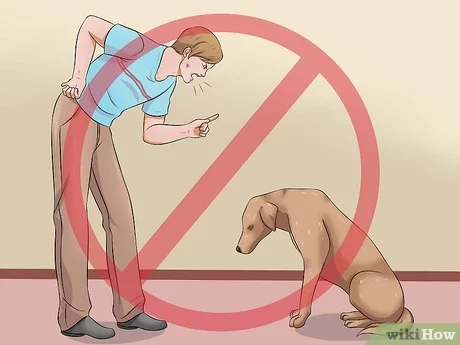Why Does My Dog Chew On Wood
Dogs are known for their playful and curious nature, but sometimes they exhibit behaviors that can be perplexing to their owners. One of these behaviors is chewing on wood. Many dog owners have witnessed their furry friend gnawing on a piece of furniture or even a tree branch. But why do dogs chew on wood? In this article, we will explore the reasons behind this behavior and provide some tips to prevent it.
Possible Reasons Why Dogs Chew on Wood
1. Boredom and Lack of Exercise
Dogs that are left alone for long periods or don’t get enough exercise may become bored and resort to destructive chewing as a way to alleviate their frustration. Chewing releases endorphins, which can help them feel more relaxed and satisfied.
Solution: Provide your dog with plenty of exercise and mental stimulation. Take them for daily walks, play fetch or engage in other activities that will tire them out both physically and mentally. Consider providing puzzle toys or chew toys to keep them occupied when you’re not around.
2. Anxiety and Stress
Some dogs chew on wood as a coping mechanism for anxiety or stress. This could be due to separation anxiety, fear of loud noises like thunderstorms, or changes in their environment such as moving to a new home.
Solution: If you suspect your dog is suffering from anxiety or stress, consult with a veterinarian or animal behaviorist who can provide guidance on how to manage these issues. You may also want to try providing a comfortable “safe space” for your dog where they can retreat when feeling anxious.
3. Nutritional Deficiencies
Dogs may chew on wood if they’re lacking certain nutrients in their diet, such as fiber, vitamins, or minerals.
Solution: Make sure your dog is getting a balanced diet that meets all their nutritional needs. Consult with a veterinarian if you have concerns about their diet or supplements.
4. Teething
Puppies often chew on objects as a way to soothe their teething pain. This behavior typically subsides as they reach adulthood.
Solution: Provide your puppy with appropriate chew toys that are safe for them to gnaw on. You can also try freezing some of their toys or treats to provide extra relief for their sore gums.
5. Habit
Sometimes dogs develop a habit of chewing on wood simply because they enjoy it and have done so for a long time.
Solution: Redirect your dog’s chewing behavior to more appropriate objects such as chew toys or bones. Praise and reward them when they chew on these items instead of wood.
Preventing Wood Chewing
1. Watch Your Dog
Keep an eye on your dog when they’re around wooden objects or furniture. If you see them starting to chew, redirect them to an appropriate object or give them a command like “leave it” to discourage the behavior.
2. Use Deterrents
Spray wooden objects with a bitter-tasting deterrent spray, such as apple cider vinegar or lemon juice, to make them less appealing to your dog. You can also try using a pet-safe bitter spray designed specifically for this purpose.
3. Provide Appropriate Chew Toys
Make sure your dog has plenty of toys that are safe for them to chew on. Avoid giving them old shoes or other items that may resemble wood and encourage inappropriate chewing behavior.
4. Train Your Dog
Teach your dog basic obedience commands such as “sit,” “stay,” and “leave it.” This will help you control their behavior and prevent destructive chewing.
Conclusion
In conclusion, dogs may chew on wood for various reasons such as boredom, anxiety, nutritional deficiencies, teething, or habit. As a responsible dog owner, it’s important to understand why your dog is engaging in this behavior and take steps to prevent it from becoming a problem. By providing proper exercise, mental stimulation, nutrition, and training, you can help your dog overcome their wood-chewing habit and live a happy, healthy life.



